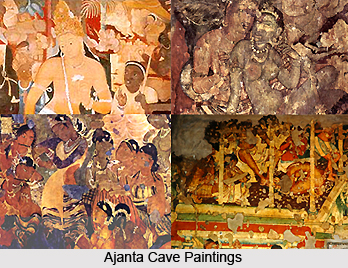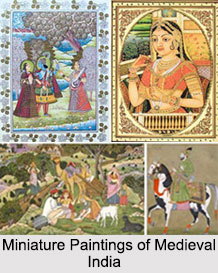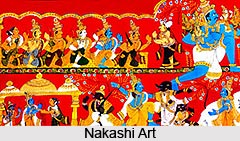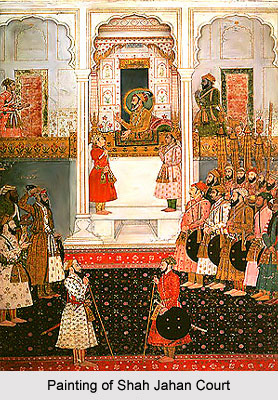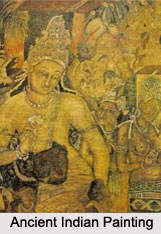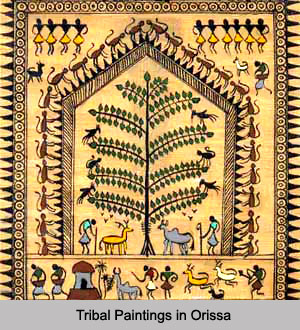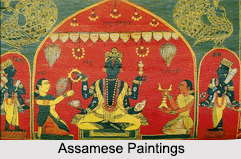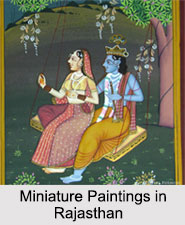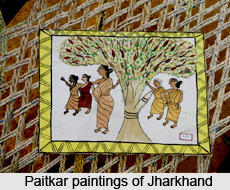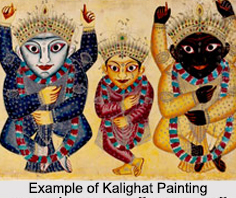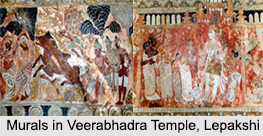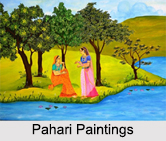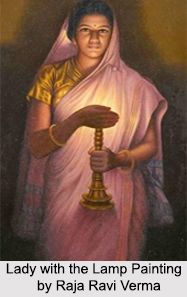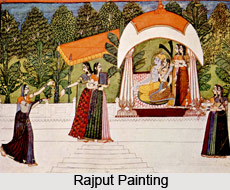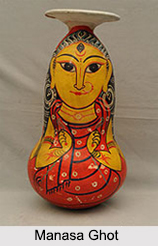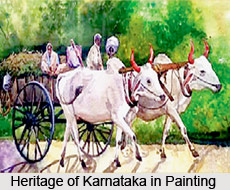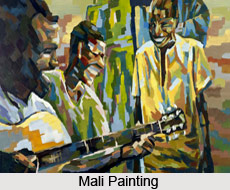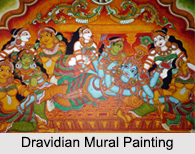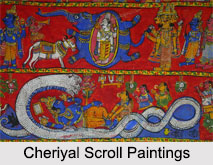About Cave Paintings
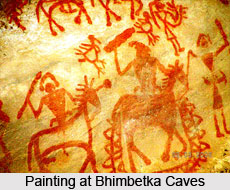 Indian cave paintings are of utmost importance due to the lack of proper documented and written records of prehistoric period. Moreover, Indian cave paintings have more durability than most other forms of paintings and are comparatively safe from general wear and tear that gravely affects paper, fabric, wooden or other form of ancient art. Indian caves provide the adequate setting for preservation of ancient paintings by means of which an idea about the ancient way of life and society can be obtained.
Indian cave paintings are of utmost importance due to the lack of proper documented and written records of prehistoric period. Moreover, Indian cave paintings have more durability than most other forms of paintings and are comparatively safe from general wear and tear that gravely affects paper, fabric, wooden or other form of ancient art. Indian caves provide the adequate setting for preservation of ancient paintings by means of which an idea about the ancient way of life and society can be obtained.
The blessed topography of India comprises of adequate landscapes that provide the perfect setting for cave paintings and other rock-cut sculptures. Approximately, there are almost 1500 separate caves in the country at present, and more new caves are being exhumed with the course of time. The Deccan Plateau of India comprises of granite, Basalt, diorite which is extensively available in the area. Deep caves provide the idyllic protection from various elements, for the diverse culture and creative styles in Indian cave paintings.
History of Indian Cave Paintings
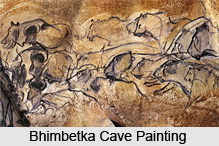 Many ancient painting in India have been preserved over time, even though painting, as an art form, is considered to be comparatively fragile and short lived. The rock cut structures and cave paintings provide the art to survive for ages. No other place on earth can compete with India in this respect. The geology of the Deccan Plateau and other region of India, offer enough domes and cliff faces suitable to rock cut caves. Since the pre-historic days India has experienced extremely flourishing and diversity of culture.
Many ancient painting in India have been preserved over time, even though painting, as an art form, is considered to be comparatively fragile and short lived. The rock cut structures and cave paintings provide the art to survive for ages. No other place on earth can compete with India in this respect. The geology of the Deccan Plateau and other region of India, offer enough domes and cliff faces suitable to rock cut caves. Since the pre-historic days India has experienced extremely flourishing and diversity of culture.
Indian Cave Paintings in Prehistoric times
Smaller shelters and natural caves in India very often contain prehistoric art and paintings. Monuments of the exceptional value are Bhimbetka Rock Shelters, here, more than 500smaller rocks and caves contains thousands of paintings. Some of the oldest paintings here are more than 15000 years old, and in some cases it is 30,000 years old. The prehistoric art from is spread all over India from snow covered Himalayas to south of Tamil Nadu.
Ancient Indian Cave Painting
The Cave 10 in Ajanta contains the oldest Indian paintings made circa 1st century BC. Substantive part of the Ajanta paintings is from the later time, mainly from 460 AD to 480 AD. The designs and art forms are world renowned and tell stories of the life of Buddha and other characteristic features about Buddhism. Many of the sculptures and women paintings depict mythical beings like nagas, yakshas, vrikshikas, river goddesses Yamuna and Ganga. The super natural beauty is part of the feel and essence of such beings.
The unique monument of art in India, which is also internationally famous, is found in Jogimara Cave in Chhattisgarh, made circa in the 1st century BC. Contrary to other cave paintings, here there is no depiction of Indian religion. The paintings mainly show fish, elephant figures, dancing couple and chariots.
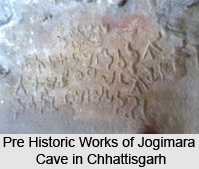 The Pitalkhora Caves in Maharastra were decorated with beautiful paintings in 4th century AD, and the remains of these art and paintings are preserved till today. Some of the ancient and beautiful Indian cave paintings have been carefully preserved in Bagh Caves in Madhya Pradesh. This truly beautiful artwork has been created circa 4th-6th century AD. There are paintings which have been restored in the royal Badami Cave Temple in Karnataka from 6th -7th century AD. Here the ceilings contain the painting pictures of four armed Brahma on his swans. The traces of less impressive ancient paintings from 3rd - 8th century AD are found in many caves in Maharashtra- Thanale, Karsamble, Kuda Lenvadri, Tulja Lena, Shivneri, Manmod also popular for Bhaja Caves and Elephanta Caves. The traces of ancient paintings are found in Ravana Phadi- beautiful cave temple from 550 AD in ancient capital Aihole in Karnataka.
The Pitalkhora Caves in Maharastra were decorated with beautiful paintings in 4th century AD, and the remains of these art and paintings are preserved till today. Some of the ancient and beautiful Indian cave paintings have been carefully preserved in Bagh Caves in Madhya Pradesh. This truly beautiful artwork has been created circa 4th-6th century AD. There are paintings which have been restored in the royal Badami Cave Temple in Karnataka from 6th -7th century AD. Here the ceilings contain the painting pictures of four armed Brahma on his swans. The traces of less impressive ancient paintings from 3rd - 8th century AD are found in many caves in Maharashtra- Thanale, Karsamble, Kuda Lenvadri, Tulja Lena, Shivneri, Manmod also popular for Bhaja Caves and Elephanta Caves. The traces of ancient paintings are found in Ravana Phadi- beautiful cave temple from 550 AD in ancient capital Aihole in Karnataka.
Medieval Indian Cave Paintings
The structures of Indian paintings and art forms that is comparatively less known is in Sittanavasal Cave (Tamil Nadu). In the 7th and 9th century AD there was rock cut Jain Temple named Arivar-Koil. The paintings here cover the upper part of the ceilings and were built in 9th century AD.
Armamalai Cave that was built in 8th century is a natural cave that served as Jain sanctuary.
Thirunadhikkara Cave Temple now in Tamil Nadu is a typical rock cut Jain Temple that was built in 8th century AD. The interior of the temple is decorated with beautiful paintings. Though now only hazy outlines remain, but once upon a time there were colourful depiction of the stories from Ramayana and Mahabharata. The style of the painting was later used in the Kerala style of painting.
In Olipathivishnu Vishnugraham, which was built in 9th century AD, the walls are covered with paintings and stucco. The drawing depicts ten incarnations of Vishnu- Dashavatara and also other motives of religious natures.
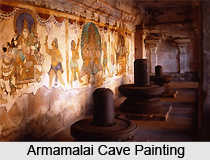 There are many rock cut cave temple and also monasteries situated in Himalayan regions. Saspol Caves, located in Jammu and Kashmir, contains Buddhist panteon. Most of the paintings use blue colour and has an uncanny resemblance with Indian Buddhist art.
There are many rock cut cave temple and also monasteries situated in Himalayan regions. Saspol Caves, located in Jammu and Kashmir, contains Buddhist panteon. Most of the paintings use blue colour and has an uncanny resemblance with Indian Buddhist art.
There are also traces of beautiful wall paintings found in Tabo Caves in Himachal Pradesh and in Bhimbetka Rock in Madhya Pradesh. Significant traces of medieval paintings are also found in Thiruparankundram, Murugan Temple (Tamil Nadu), Kanheri Caves in Maharashtra, Undavalli in Andhra Pradesh and Manmod Caves in Maharashtra.
Religious Cave Paintings in India
Various natural rock-cut caves of India usually contain ancient and prehistoric cave art and paintings which is spread though out the country from the Himalayas to the southern part of India. The Rock Shelters of Bhimbetka in Madhya Pradesh are of outstanding importance as there are around 500 caves and rock shelter which contain numerous paintings. The earliest painting may be as old as 15,000 years and it shelters some of the most primitive paintings created by humans around the world. The earliest petroglyphs are also located in here which may be almost 290,000 years old. The Ajanta Caves also contains very old paintings that can be dated back to 1st century BC, although most of the other paintings are originally from 460 - 480 AD. The murals in the Ajanta are famous for Buddhist art which centre on the life tales of Lord Buddha.
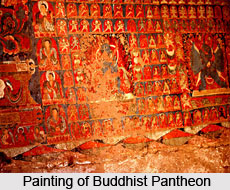 Various mythical creatures like Nagas, Yakshas, Vrikshikas, and also other goddesses. The unique artworks of Jogimara Cave in Chhattisgarh, which were made around the 1st century BC, are not linked with religion, unlike most other Indian Cave Paintings, instead they portray images of elephant, fish and dancing couples.
Various mythical creatures like Nagas, Yakshas, Vrikshikas, and also other goddesses. The unique artworks of Jogimara Cave in Chhattisgarh, which were made around the 1st century BC, are not linked with religion, unlike most other Indian Cave Paintings, instead they portray images of elephant, fish and dancing couples.
In Maharashtra, the Pitalkhora Caves were ornamented with artistic paintings that belong to the 4th century AD and these have been preserved till now. More stunning paintings are conserved in Bagh Caves, Madhya Pradesh, which also date back to 4th - 6th century AD. The paintings in the Badami Cave Temples of Karnataka, approximately from late 6th - 7th century AD, portray paintings of Lord Brahma riding his swan. In Orissa, Ravan Chhaya rock shelter, also hosts remarkable testament of art of the tempera painting style. The Ellora Caves of Maharashtra are also of great importance as five caves enclose remnants of ancient Indian painting. The striking murals of the Cave 32 and 33, which are from the 9th- 11th century, mark the origin of the medieval era Indian painting. The paintings in the Kailasanatha temple are conserved in a better state.
Cave Paintings in South India
The most stunning Indian cave paintings of the medieval period can be found in Southern India. Extraordinary amongst these are paintings of Sittanavasal Cave, Tamil Nadu, which are of the period from 7th -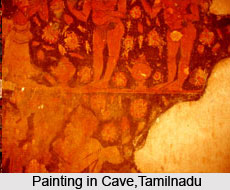 9th century AD. The artwork is spread all over the ceiling of the caves and the pillars. The murals depict a picture of Samava-Sarana, which is considered important in Jain religion. It shows a pond with lotus flowing on the water surface.
There are also paintings of gods and Apsaras, elephants and bulls.
9th century AD. The artwork is spread all over the ceiling of the caves and the pillars. The murals depict a picture of Samava-Sarana, which is considered important in Jain religion. It shows a pond with lotus flowing on the water surface.
There are also paintings of gods and Apsaras, elephants and bulls.
The Armamalai Cave in Tamil Nadu also portrays themes of the Jain religion, and dates back to 8th century AD. The walls and ceilings are covered with art of lotuses, flowers and humans. Thirunadhikkara Cave Temple, which was a Jain temple earlier, but was converted into a Hindu sacred ground, is highlighted with gorgeous paintings which portray stories from the Mahabharata and Ramayana. The Vishnu temple of Olipathivishnu Vishnugraham in Tamil Nadu, which belongs to the Malayadipatti rock-cut Hindu temples, depicts the Dashavatara, the ten incarnations of Lord Vishnu.
Numerous beautiful rock cut caves are scattered through out the Himalaya. Buddhist paintings of the Saspol Caves in Jammu and Kashmir, from the 13th - 15th century AD, are of special significance to the Buddhist monks. The painting is a mix of Indian and Tibetan Buddhist art and the colour Blue seems dominant in these paintings. The cave paintings of the Tabo Caves in Himachal Pradesh are also worth mentioning. Cave paintings from the medieval era can also be tracked in the Bhimbetka Rock Shelters, amongst the ancient paintings. Indian Cave Paintings can also be found in Thiruparankundram and Murugan Temple in Tamil Nadu, Manmod and Kanheri Caves in Maharashtra and Undavalli in Andhra Pradesh.
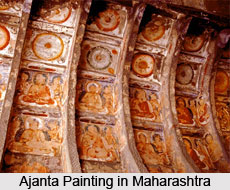 Techniques in Indian Cave Paintings
Techniques in Indian Cave Paintings
Indian cave painting were usually created in tempera and fresco techniques. The preparation of the surface that served as the canvas was also given due importance. The surface was generally plastered with lime, clay, dung and hay, after being chiselled to make the surface rough. This was normally done to achieve a smooth finish and a glossy effect was added with the use of seashells and conch dusts.
Indian cave painting has suffered adequate erosion over time as colours have faded and have been tarnished. Moreover damp and moist air also adds to the degradation process of the artwork. In the recent times, graffiti created on the painting by immoral and irresponsible citizens have also become a poignant threat. Proper steps and measures should be undertaken in order to preserve and conserve the Indian cave paintings, as these are of great value to the entire world.
